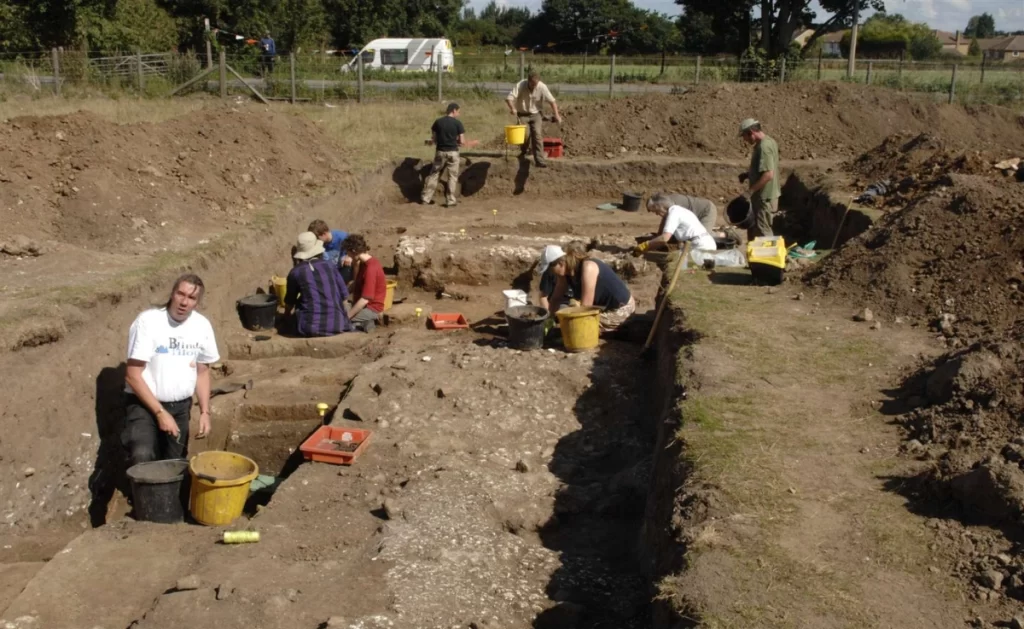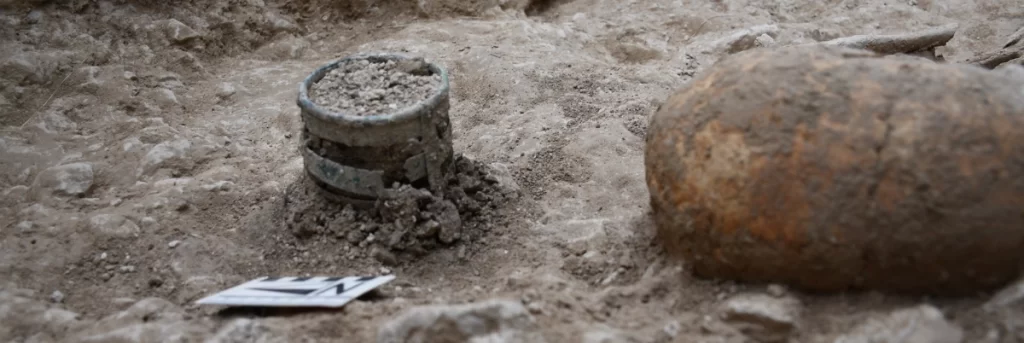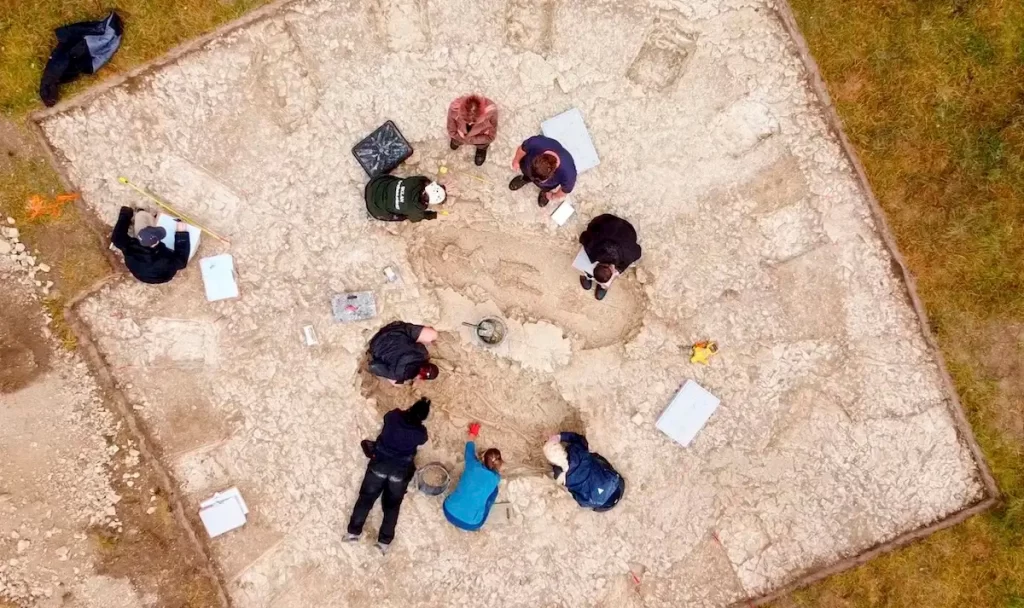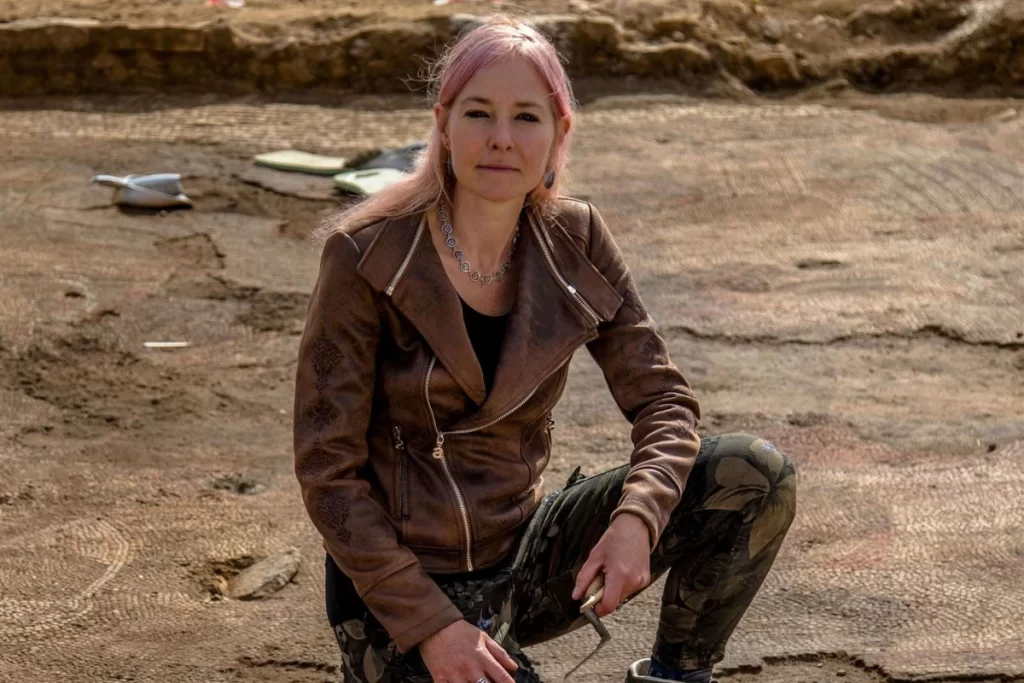Sixth-Century Anglo-Saxon Sword Found
A sixth-century sword has been discovered at an Anglo-Saxon cemetery near Canterbury, England. Archaeologists are optimistic that this early medieval weapon, which has been likened to the renowned Sutton Hoo sword, will provide fresh insights into life during the sixth century in that area. It is being hailed as one of the most important discoveries of the decade. It will also be featured in the BBC Two’s ‘Digging for Britain.’
Male interments feature weaponry such as spears and shields, swords, and iron spear tips. Female graves contain brooches, buckles, and knives. According to RBC, hunting tools, jewellery, amulets, and beads made from ivory were also found. This excavation is part of a broader initiative to investigate 300 early Anglo-Saxon graves along the entire eastern coast of Britain.
The Detailings on the Sword
The sword was impressively preserved and buried about 1,500 years ago. It features a silver-and-gilt hilt adorned with a detailed decorative design, and a runic inscription is visible on its blade. Additionally, parts of the sword’s leather-and-wood scabbard are lined with beaver fur. A ring attached to its pommel signifies an oath to a king or another individual of high status. Using a microscope, scientists found pupae present on the sword, which implies that the body was not interred right away.

This hints at an unknown burial custom from the early Medieval period during the 5th and 6th centuries, potentially akin to an “open casket” approach. In the same burial site, archaeologists found a gold pendant featuring a snake or dragon design, thought to be a memento from a female relative or ancestor of the sword’s possessor. These pendants adorned high-status women, indicating the deceased’s social position.
Duncan Slayer on the Discovery
Duncan Sayer, lead archaeologist and professor of archaeology at the University of Central Lancashire, speaks, “It’s incredible, in the top echelons of swords, an elite object in every way, which is wonderful. It rivals the swords from Dover and Sutton Hoo.”
Sayer adds, “We can see the change in the political landscape within Kent in this site in the fifth and sixth centuries. Before we published those results, there was still quite a lot of conversation about whether there was a significant migration. Now it’s definite that there has to have been a very significant influx, especially in the East Coast taking place over generations. They’re not coming from one place, but multiple places. This cemetery is right at the cutting edge of that work.”
Where was the Artefact Found?
The sword was unearthed in an Anglo-Saxon cemetery located in Kent. So far, twelve burials have been excavated at the site, with estimates suggesting there may be around 200 more, all tracing back to the fifth and sixth centuries. The specific location of the cemetery is barred from the public, as excavations are still in progress. Sayer explains, “We’re keeping the name of the site under wraps. It’s a very rich cemetery. It would be a real tragedy if it became well known before we’ve excavated it.”

Studying the Artefacts
The sword from the sixth century, along with additional artefacts from the excavation site, will undergo thorough research and conservation efforts. It will shed light on Anglo-Saxon customs and burial practices. The sword and other artefacts provide valuable information about the migratory trends and cultural relationships of that era.

Some of the later sixth-century graves include artefacts from Frankish origins, which align with other graves that have revealed artefacts of both Scandinavian and Frankish ancestry. This aligns with DNA analysis results that validate migrations towards the east coast of Britain following the conclusion of Roman rule. As reported by RMF24, a study involving 300 early Anglo-Saxons from the east coast of Britain determined that approximately 75% of their DNA traces back to continental northern Europe.
Alice Roberts on the Anglo-Saxon Cemetary
Alice Roberts, professor and presenter of the BBC Two docuseries Digging for Britain, states, “It’s an extraordinary Anglo-Saxon cemetery, with really beautifully furnished graves, a lot of weapon burials where you find things like iron spear-points and seaxes, which are Anglo-Saxon knives—and then there’s this astonishing sword. We have fairly sparse historical sources when it comes to this period, which used to be called the Dark Ages. We don’t have much in the way of contemporary writing.”

Eventually, it will be displayed at the Folkestone Museum in Kent.
Image Courtesy – Archaeology News
Contributor





